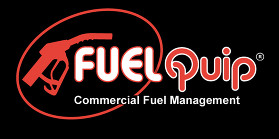Why You Need A Fuel Management System For Trucks In Your Fleet
Anyone who uses vehicles, particularly trucks, for their work knows that one of the largest operating expenses by far is gasoline. Trucks especially use a lot of it since they generally have bigger engines that burn more gas. Fortunately, there are ways to track how much you use and to see if there are any opportunities to save on costs and reduce your overall gas usage. This requires you to install a fuel management system for trucks onto individual vehicles or your entire fleet.
These systems use a combination of onboard devices that must be installed on each individual truck and computer data to help you manage your fuel efficiency. Another thing that some of these systems are intended to guard against is theft. Theft of fuel by employees is a reality in some cases, and it is pretty easy to mask the theft as fuel that was just being burned through normal driving. Figuring out if an employee is stealing and firing them not only saves you money, but it is a warning to other employees not to mimic the fired person’s behavior.
The software that comes with the newly installed system automatically tallies everybody’s usage and compares them against each other. If one rig is using much more, it could be that you need to repair that vehicle, since it is not as efficient as the other rigs. Fixing it is a quick and easy way to save money. Then compare its usage against the others again after repairs to ensure it is in line with what you expect.
Fuel sensors are the most common installation on trucks. This is a relatively small electronic device put directly into the fuel tank. It measures the amount in the tank after being fueled, and then measures it constantly and sends that information to the software database using a GPS tracker. If you do not already have a GPS tracker installed on your fleet, this is a good way to kill two birds with one stone.
There are some sensors that also come with diagnostics onboard. These detect gas emissions on the truck, which can help you stay in line with any local or state laws regarding how much exhaust can come from your vehicles. It can also tell you if there is something wrong with the exhaust system that may need attention.
Depending on what system you install, there are other things you can get reports on. For example, coolant temperature, mileage per gallon or tank of gas, how many times the engine is turned off and on, and even the rotations per minute of the tires, which can help you detect over or underinflated tires that could be costing you fuel efficiency.
If you want to get a step further, you can install a system that also has cameras. There would be an onboard tracking DVR and camera installed on the truck that would then use either 3G or 4G data to send information to the software, along with images and video.
While trucks have large tanks that are perfect for these sensors and GPS trackers, unfortunately, other vehicle types are not so great. A regular commuter or consumer car is usually too small to have one of these installed, or they have irregular tanks that won’t fit the device. But if you run a business, this is easily the best way to check your efficiency.


